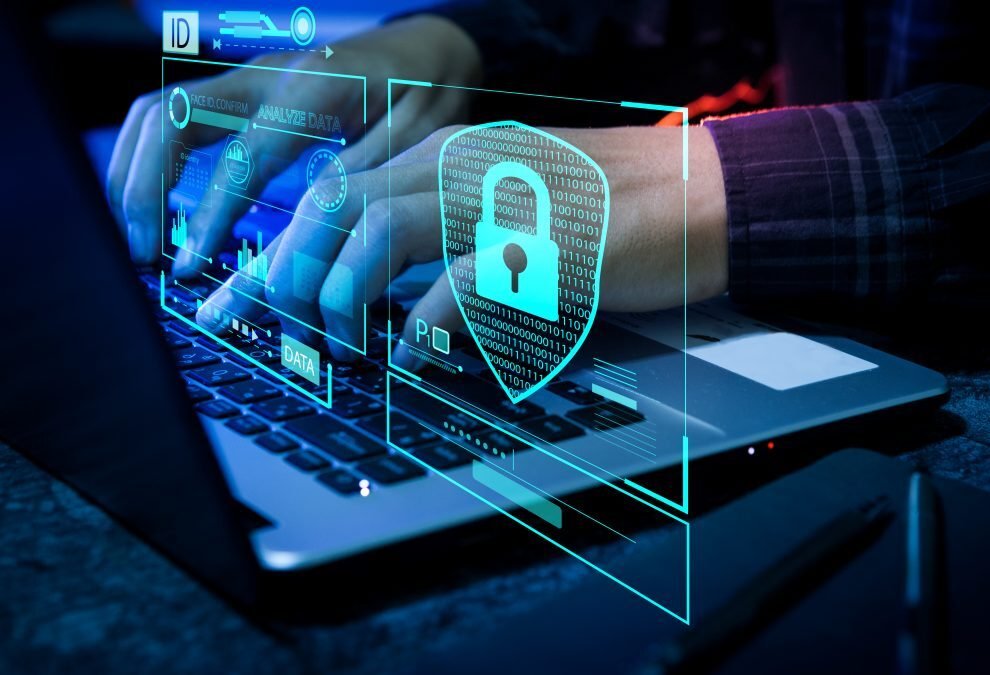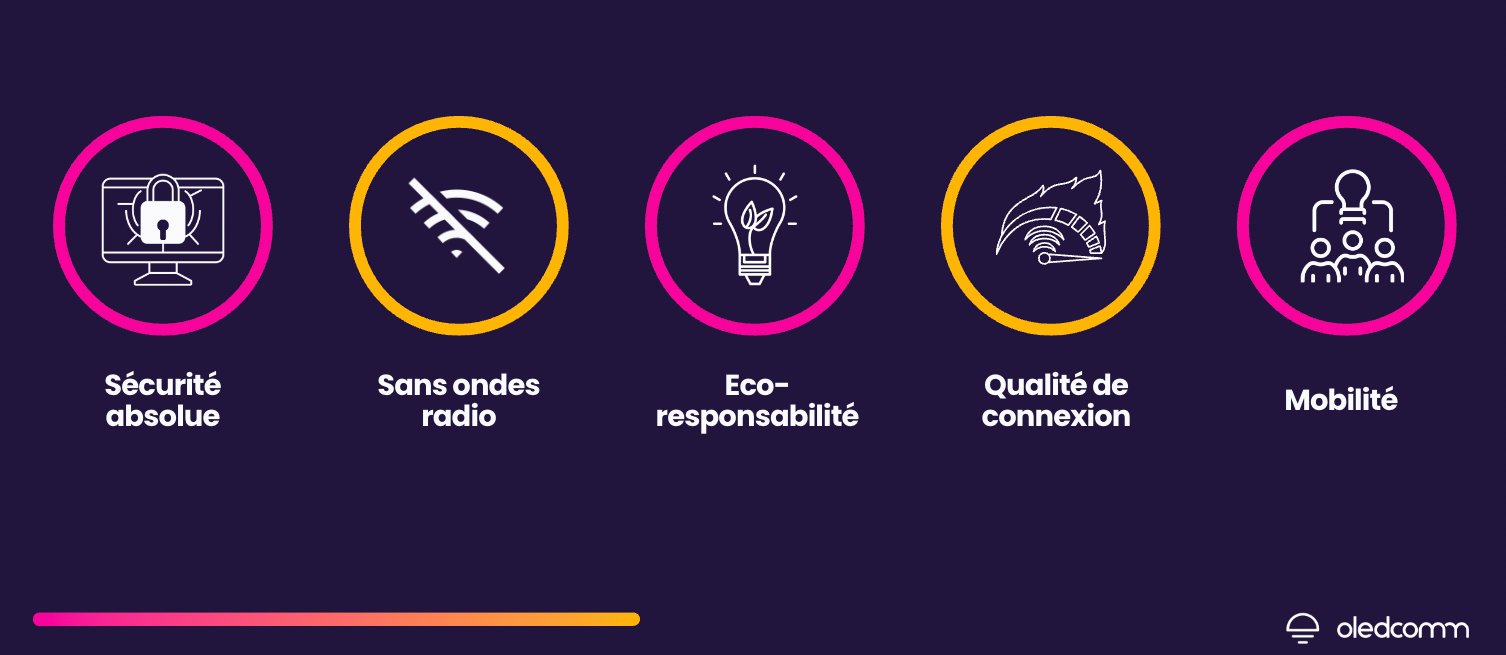
Blog
Sécurité internet : pourquoi opter pour le LiFi ?
A la différence des ondes radiofréquences utilisées par le WiFi, le signal émis par un point d’accès LiFi est strictement cloisonné à la pièce dans laquelle il est diffusé. Cette caractéristique représente un avantage considérable pour les structures maniant des données sensibles, particulièrement sujettes aux cyberattaques.

At a time when our personal data is under daily threat from cybercriminals, discover how LiFi is emerging as an unstoppable solution to Internet security issues.
In an interconnected world where the most sensitive data is digitized, the fight against cybercrime has become a priority issue. Among the sectors most concerned, one thinks of course of defense, law firms and governments, but it is also a concern in education and in all types of companies that can also fall victim to digital malicious acts.
Although WiFi is still used in the majority of these areas, history has shown that it is not able to offer a satisfactory response to the problem of cyber security. Because these issues cannot be treated lightly, sensitive sectors are increasingly turning to another wireless connection technology that could well become the benchmark for secure networks: LiFi
LiFi in a nutshell
LiFi, for Light Fidelity, is a light-based telecommunication technology. The transmission of data via LiFi is based on the ultra-fast modulation of the intensity of an LED light source (Access Point), which is then interpreted by a receiver device (Dongle), plugged in or integrated into the device (computer, smartphone, tablet...).
Unlike the radio waves used by WiFi, the signal emitted by a LiFi access point is strictly confined to the room in which it is broadcast. This is a considerable advantage for organizations handling sensitive data, which are particularly prone to cyber attacks.
How does Li Fi work?
To better understand how LiFi works, think of Morse code, which is based on a series of short and long pulses. Then imagine that these pulses are light in nature, and instead of being longer or shorter, they are more or less intense.
LED bulbs have a particularly high switching capacity, allowing them to perform several tens of thousands of variations per second. These variations are captured by the receiving device and converted into binary language to be translated into digital content by the connected device.
LiFi: towards a new era in cyber security
How is WiFi not secure?
Although it paved the way for the digital world as we know it today, WiFi remains a favorite playground for hackers and cybercriminals.
The latter take advantage of the lack of vigilance of individuals and companies on their computer networks, which is a real boon when you consider that a single WiFi access point has an average range of 250 meters outside and 35 meters inside.
This is because the radio frequency waves that make up the WiFi signal pass through walls with little effort and can be intercepted by any malicious person in the vicinity of the structure for which the access point is intended.
If the lack of security of WiFi is no longer a secret, it is now necessary to understand how LiFi differs from it.
LiFi, an unhackable technology
LiFi data is transmitted via a beam of light, emitted from a ceiling-mounted device and projected towards the user's workstation, and possibly towards neighboring users, depending on the desired coverage angle.
It is therefore exclusively in this illuminated area, which does not exceed 10 square meters, that the data exchange takes place. As light does not penetrate the walls of a room, it is technically impossible for someone outside to hack into the signal.
In practice, this means that any room or building equipped with a LiFi network can be accessed from outside. It is even possible to adjust the coverage of each LiFi Access Point to assign an Access Point to a particular user or users, and thus have control over the activity of each user within a room.
A Secure technology, but not only
LiFi is set to revolutionize the concept of a secure network, but it is not the only thing it has going for it. Among the many advantages that make it such a promising technology are the following:
- A high-speed Internet connection of up to 1 Gb/s, equivalent to the speed of optical fibre
- A stable, latency-free connection even when used by several users simultaneously
- Technology without radio wave pollution: safer for health and without interference with other communication technologies
- Simple and discreet installation
- A system tailored to your needs and constraints
And much more.
Articles récents

Catégories
Découvrez aussi...



